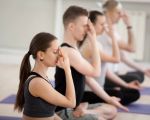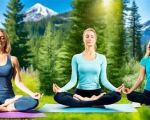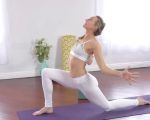- 1-Understanding-Chronic-Stress-and-Anxiety
- 2-How-Yoga-Helps-Manage-Chronic-Stress
- 3-Key-Yoga-Poses-for-Anxiety-Relief
- 4-Breathing-Techniques-in-Yoga-for-Stress-Reduction
- 5-Incorporating-Mindfulness-and-Meditation-in-Yoga-Practice
- 6-Personal-Stories-and-Case-Studies
- 7-Finding-the-Right-Yoga-Resources-and-Support
1. Understanding Chronic Stress and Anxiety
Chronic stress and anxiety are increasingly common conditions that affect millions worldwide. Unlike temporary stress, chronic stress persists over long periods and can lead to serious health issues such as heart disease, insomnia, and weakened immunity. Anxiety disorders, similarly, can interfere with daily life, causing persistent worry and fear. Recognizing these conditions is the first step towards effective management.
Experts emphasize the importance of holistic approaches, including lifestyle changes and mind-body practices, to address the root causes and symptoms of chronic stress and anxiety.
2. How Yoga Helps Manage Chronic Stress
Yoga for managing chronic stress and anxiety offers a natural, accessible method to calm the nervous system and promote relaxation. Through physical postures, breathing exercises, and meditation, yoga reduces cortisol levels—the body’s primary stress hormone. This combination helps alleviate tension and improves emotional resilience.
Scientific studies confirm that regular yoga practice can significantly decrease anxiety symptoms and enhance overall mental well-being. The integrative nature of yoga connects body and mind, fostering a state of calm awareness.
3. Key Yoga Poses for Anxiety Relief
Certain yoga poses are especially effective for anxiety relief and stress reduction. Poses such as Child’s Pose (Balasana), Legs-Up-The-Wall (Viparita Karani), and Cat-Cow Stretch (Marjaryasana-Bitilasana) help relax muscles, improve circulation, and calm the mind.
Incorporating these poses into a daily routine can create a powerful practice that targets the physical and emotional aspects of anxiety. Consistency is key to experiencing lasting benefits.
4. Breathing Techniques in Yoga for Stress Reduction
Breath control, or pranayama, is a cornerstone of yoga practice for anxiety management. Techniques such as Alternate Nostril Breathing (Nadi Shodhana) and Deep Diaphragmatic Breathing activate the parasympathetic nervous system, promoting relaxation and reducing stress.
Learning to control the breath enhances focus, reduces panic attacks, and creates a calming effect that carries beyond the yoga session.
5. Incorporating Mindfulness and Meditation in Yoga Practice
Mindfulness meditation complements yoga by training the mind to stay present and observe thoughts without judgment. This practice reduces rumination and anxiety-driven thoughts, which often exacerbate chronic stress.
Guided meditations, body scans, and mindful movement within yoga sessions deepen the stress-relief effects and support emotional balance.
6. Personal Stories and Case Studies
Many practitioners report transformative effects of yoga on their chronic stress and anxiety. For instance, a recent case study showed a woman with generalized anxiety disorder who, after 8 weeks of regular yoga practice focusing on breath and restorative poses, experienced significant reductions in anxiety levels and improved sleep quality.
These personal stories highlight yoga’s potential as a complementary therapy and inspire others to explore this healing path.
7. Finding the Right Yoga Resources and Support
Access to quality yoga instruction is vital for safe and effective practice. Platforms like Free Yoga Links offer a curated selection of classes tailored for anxiety and chronic stress, from beginner-friendly sessions to advanced practices.
Utilizing trusted resources ensures you learn proper techniques and receive support to maintain consistency and progress in your yoga journey.
Embracing yoga for managing chronic stress and anxiety can profoundly improve your quality of life. Explore these practices and let Free Yoga Links guide you to the best classes and tools for your well-being.








